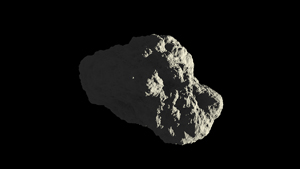
In the first of a new column, DAVID ADAMS looks at some amazing facts about asteroids…
Last week news broke that a 411 metre wide asteroid, which narrowly missed earth (by narrowly, we mean it passed within 6.7 million kilometres of earth), will return in 2032 with a reported 1 in 63,000 probability of actually striking the earth. So on the back of that – and to launch our new column – here’s some amazing facts about asteroids…

PICTURE: www.sxc.hu
• There are thought to be billions of asteroids in our solar system alone with at least one new asteroid discovered every year since 1847.
• Most asteroids in our solar system lie between the orbits of Jupiter and Mars in what is called the Asteroid Belt.
• Asteroids are divided into different classes depending on their composition. S class asteroids, for example, mostly consist of stone and iron.
• Not all asteroids are solid rock – some are more like a pile of rubble held together by their collective gravity.
• Most asteroids are covered in a rocky rubble called regolith which is created when asteroids strike each other.
• The largest known asteroid measures about 950 kilometres in diameter. Known as Ceres and almost spherical, it’s also classified as a dwarf planet. Thanks to its size, it was also the first asteroid spotted (in 1801).
• Asteroids can have moons. In 1993, the spacecraft Galileo discovered asteroid 243 Ida had a moon and a number of asteroids have been found to have moons since (some even have two).
• Asteroids create fragments known as meteoroids when they collide. When these meteroids enter the earth’s atmosphere, they burn up, creating a shooting star (called a meteor) but if they survive the journey and land on the earth’s surface, they are called meteorites.
• Asteroids are given numbers but some also have names. Among them are asteroids named after fictional people like Star Trek‘s Mr Spock, cities like Rio de Janeiro, and historical figures like Pharoah Ramses II.
• About once a year, an asteroid the size of car hits the earth’s atmosphere and burns up before reaching the earth’s surface.
Sources: NASA Jet Propulsion Laboratory, livescience, Universe Today, Space.com, Space Answers, Minor Planet Center.





